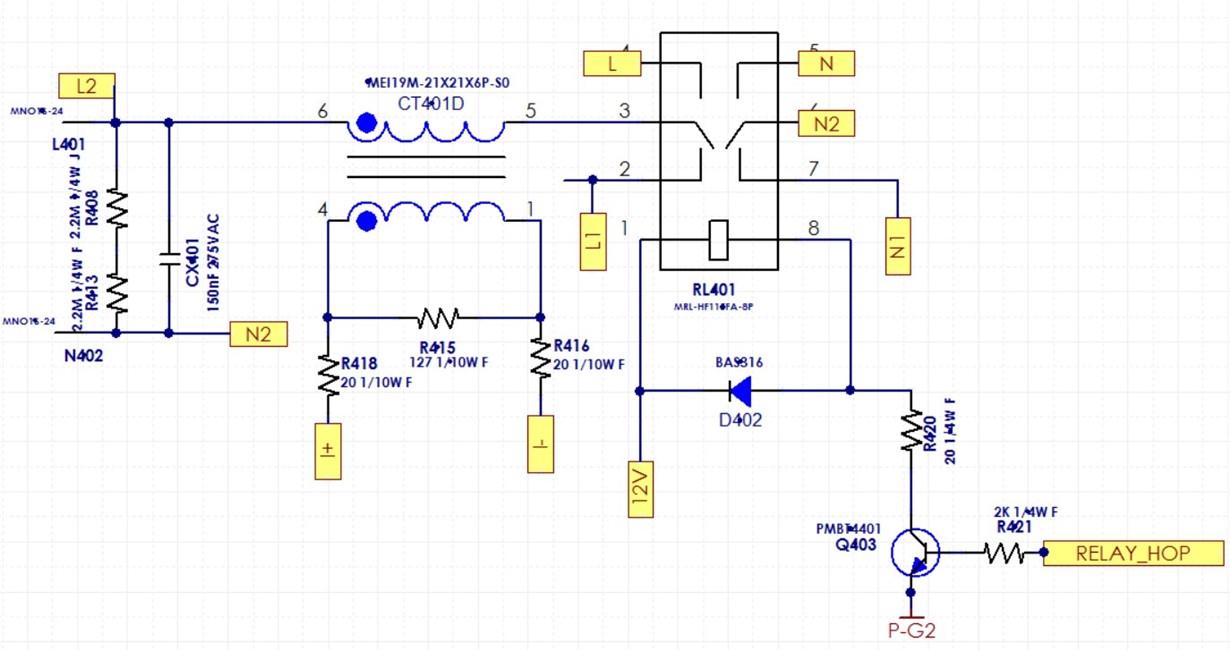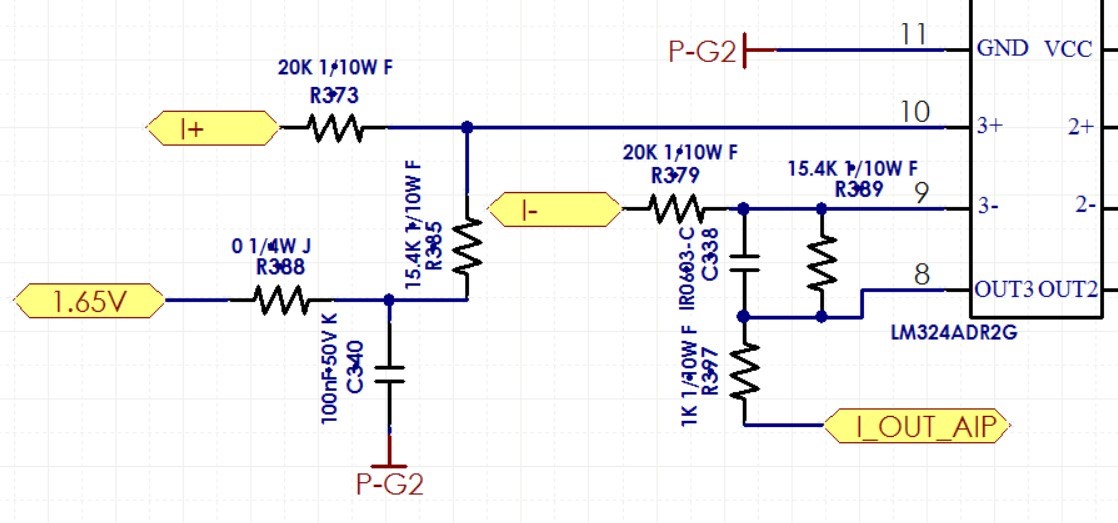Hi Team,
Today I participated TI technical roadshow I’ve heard that opamp’s offset voltage would influence the accuracy. I’m not that familiar with the calculation. I would like to give you my parameters to check whether it work or not.
We use a current transformer and LM324 for our MCU to calculate our output current (AC).
The circuit is shown as below.
L2 and N2 are connected to our output. CT401’s terminal 4-1 is 1000 turns and terminal 6-5 is 1 turn.
I+ and I- are connected to LM324 to generate a signal for MCU(STM32F030C8T6TR) to calculate the output current.
Our current accuracy criteria is 3%, is there any problem with our parameters?
Or we can use MCU to shift the reference voltage to avoid OPAMP’s offset voltage to influence our current accuracy.
Deeply appreciate your patience and response.
Best regards
Mitch



